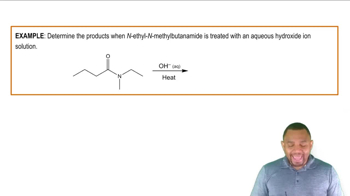Give systematic names for the following structures and structures for the names:
b. N-Phenylacetamide
 Verified step by step guidance
Verified step by step guidance Verified video answer for a similar problem:
Verified video answer for a similar problem:



 :59m
:59mMaster Intro to Amides Concept 1 with a bite sized video explanation from Jules
Start learning